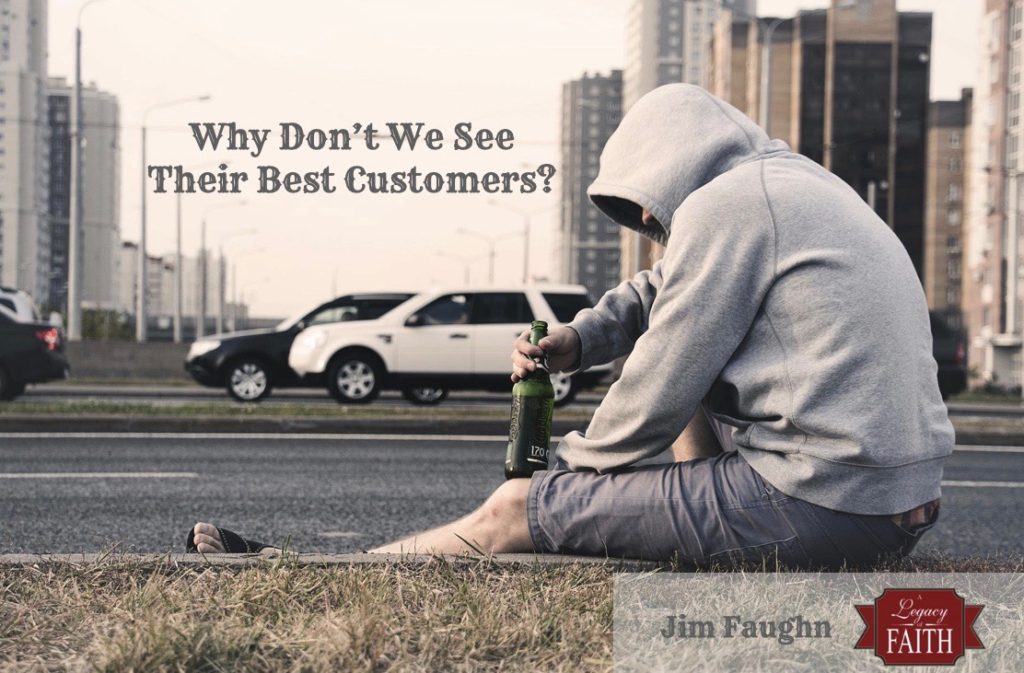Why Don’t We See Their Best Customers?
I am a long, long way from being able to think like a leader in the corporate world. Along with that, I know next to nothing about methods of advertising. With all of that said, however, I think that I’ve detected something that, on one hand, makes no sense, but which, on the other hand, makes a lot of sense.
I’m thinking that, if I wanted to sell a product, I would show pictures of, and get testimonials from, the very best customers of that product. Potential customers would be almost, if not altogether, inundated with information about how my product has enriched their lives. Depending upon what my product happened to be, the public would hear about how much healthier, wealthier, more convenient, more productive, etc. their lives will be if they choose to use my product. They might even hear (again – depending on the product) about the positive changes that have been experienced in the lives of individuals and how families have been brought closer together. It could even be the case that my product is only intended to make individuals feel better, look better, or smell better. That would be an improvement for some of us!
I’ve been doing some thinking about two industries that do not follow that trend. They fail to show us their best customers. One of them has been banned from certain types of advertising. The other one, though, seems to have an increasingly large “footprint” in the advertising world.
Have you ever noticed that neither tobacco companies nor the “adult beverage” companies put their best customers in their advertisements? Have you ever wondered why?
“Back in the day,” we used to see the Marlboro Man. If you are anywhere close to my age, just that description conjures an image of a ruggedly handsome cowboy enjoying a cigarette and inviting people to “come to where the flavor is.” According to a headline I found online from The Los Angeles Times (1/27/14), “At least four Marlboro Men have died of smoking-related diseases.” One of those men was Eric Lawson. His widow was quoted as saying, “He knew the cigarettes had a hold on him. He knew, yet he still couldn’t stop.”
It appears that Mr. Lawson was more than just the face of a brand of cigarettes. Apparently, he was one of their best customers. Why, then, did we not see him during the last stages of his life?
Why do we not see people who are fighting to breathe, hooked up to oxygen tanks, etc. in ads for cigarettes? Why did I never see in a tobacco ad the guy I saw when I was growing up who smoked his cigarettes through a hole in his throat? He was certainly a great customer. Why do we not see the people whose facial features are grotesque because of their use of “smokeless tobacco?”
I’m typing these words while a baseball game is on our television. It probably would not surprise you to read that ads for a certain brand of beer are strategically placed so that they are seen from almost every camera angle. It also probably would not surprise you to learn that many of the commercials that are shown are for some sort of alcoholic beverage.
Why don’t those corporations show their best customers? Why don’t we ever see the people who are lying in gutters or passed out in some park? Why don’t we ever see the people struggling with Delirium Tremens (DTs)?
We see plenty of pictures of people who seem to be really having a good time while they are “socializing” with friends. They look young, healthy, good looking, and energetic. Of course, they are always smiling or laughing.
Why don’t we see them when they are staggering out of the “party?” Why don’t we see them when they are dealing with a hangover? Why don’t we see the statistics that inform us of the deaths and injuries caused by drunk drivers?Why don’t we see spouses and children waiting at home wondering if and when their loved one will come home and about his or her condition when/if that happens?
I fully understand that there are those who will disagree with the message I’m trying to convey here. I understand that I may be seen as “an old fogey,” out of touch, and a lot of other things. I think I’ve heard most, if not all, of the arguments against my kind of thinking. A lot of them have to do with moderation.
Let me just end this with a challenge for those who may think I’m too strict or judgmental in my thinking:
Put a cigarette in one hand and a beer in the other and start talking to somebody about how much you love Jesus and how you are praying for him or her to become a Christian. See how that goes.
Maybe you are thinking that I have a one track mind. Maybe you’re thinking that all I think about is trying to encourage people to become Christians and to remain faithful to the Lord.
For those who may be thinking that, let me “amend” my challenge a little. How about using those same two “props” and trying to give some advice to somebody about how to be a better spouse, parent, employee, or neighbor? See how that goes.
Millions of dollars are wasted and millions of lives are ruined because a couple of industries do not want us to see their best customers. Please do not let any of those dollars or any of those lives be yours.
To Receive Every Article from A Legacy of Faith through Email for Free, Click Here
AUTHOR: Jim Faughn



